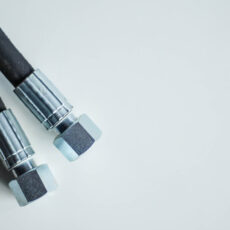 The Ultimate Guide to Hydraulic Hoses: Everything You Need to Know
The Ultimate Guide to Hydraulic Hoses: Everything You Need to Know
Hydraulic hoses are flexible pipes that are used to transmit power from one point to another using a liquid. They have become a vital component in the hydraulic industry. In the simplest terms, hydraulic hoses are the veins of a hydraulic system, and they are responsible for carrying fluid and energy to different components in the system.
In this ultimate guide to hydraulic hoses, we will cover everything from the basics to more complex topics that you need to know.
Types of Hydraulic Hoses
There are many different types of hydraulic hoses that are used today, and they vary in size, shape, and function. Some of the most common types of hydraulic hoses include:
1. Braided hydraulic hoses – These are made of multiple layers of braided wire. They are highly flexible and have a smooth exterior that makes them ideal for use in high-pressure applications.
2. Spiral hydraulic hoses – These are constructed of multiple layers of wire spiraled around a central hose core. They are very strong and are designed for use in extremely high-pressure applications.
3. Push-lock hydraulic hoses – These hoses are designed to be used without the need for clamps or special fittings. They are easy to install and are ideal for low-pressure applications such as vacuum lines or fuel lines.
4. Teflon hydraulic hoses – These hoses are made of Teflon material and are used primarily for high-temperature applications. They have excellent chemical resistance and are ideal for use in the aerospace and chemical processing industries.
Choosing the Right Hydraulic Hose
Choosing the right hydraulic hose is critical to ensure optimal performance and longevity of your hydraulic system. When selecting a hydraulic hose, there are a few key factors to consider, including:
1. Application – Determine the specific application that the hose will be used for, including the type of fluid being transmitted, temperature, pressure, and environmental factors.
2. Hose size – The size of the hose is essential as it determines the amount of fluid that can be transmitted through the system. Too small a hose will restrict fluid flow, while too large a hose will be unnecessarily heavy and costly.
3. Hose material – The type of material used for the hose will depend mainly on the operating environment, temperature, and fluid being transmitted.
4. Durability – The durability of the hose is essential to ensure that it can handle the pressure and environment of the application.
Installation, Maintenance, and Replacement
The installation, maintenance, and replacement of hydraulic hoses are critical to ensure optimal performance and safety of the system. Here are a few tips to keep in mind:
1. Proper installation – Always ensure the hydraulic hose is installed correctly, following the manufacturer’s guidelines. This includes selecting the appropriate fittings and clamps and using the correct tools for installation.
2. Regular maintenance – Regular maintenance of hydraulic hoses is essential to prevent failure or leaks. This includes inspecting hoses for signs of wear, replacing any damaged or worn hoses immediately, and regularly cleaning the system.
3. Timely replacement – Hydraulic hoses have a limited lifespan, and it’s crucial to replace them when they reach the end of their useable life. It’s recommended to replace hydraulic hoses every two to five years, depending on the amount of use and application.
Safety Tips
Finally, it’s crucial to practice safety when working with hydraulic hoses. Here are a few essential safety tips to keep in mind:
1. Always read and follow manufacturer guidelines for installation and maintenance.
2. Never attempt to repair a damaged hydraulic hose by using tape or other makeshift methods.
3. Avoid bending or twisting hydraulic hoses beyond their recommended limits.
4. Always use the appropriate PPE when working with hydraulic hoses, including gloves, safety glasses, and face shields.
Conclusion
Hydraulic hoses are a critical component of the hydraulic systems used in a wide range of industries. Understanding the different types of hydraulic hoses available, factors to consider when selecting the right hose, installation, maintenance, and replacement guidelines, and safety tips are essential to ensure optimal performance and safety of the system. By following these guidelines carefully, you can help ensure a long and productive life for your hydraulic hoses and the overall hydraulic system.

